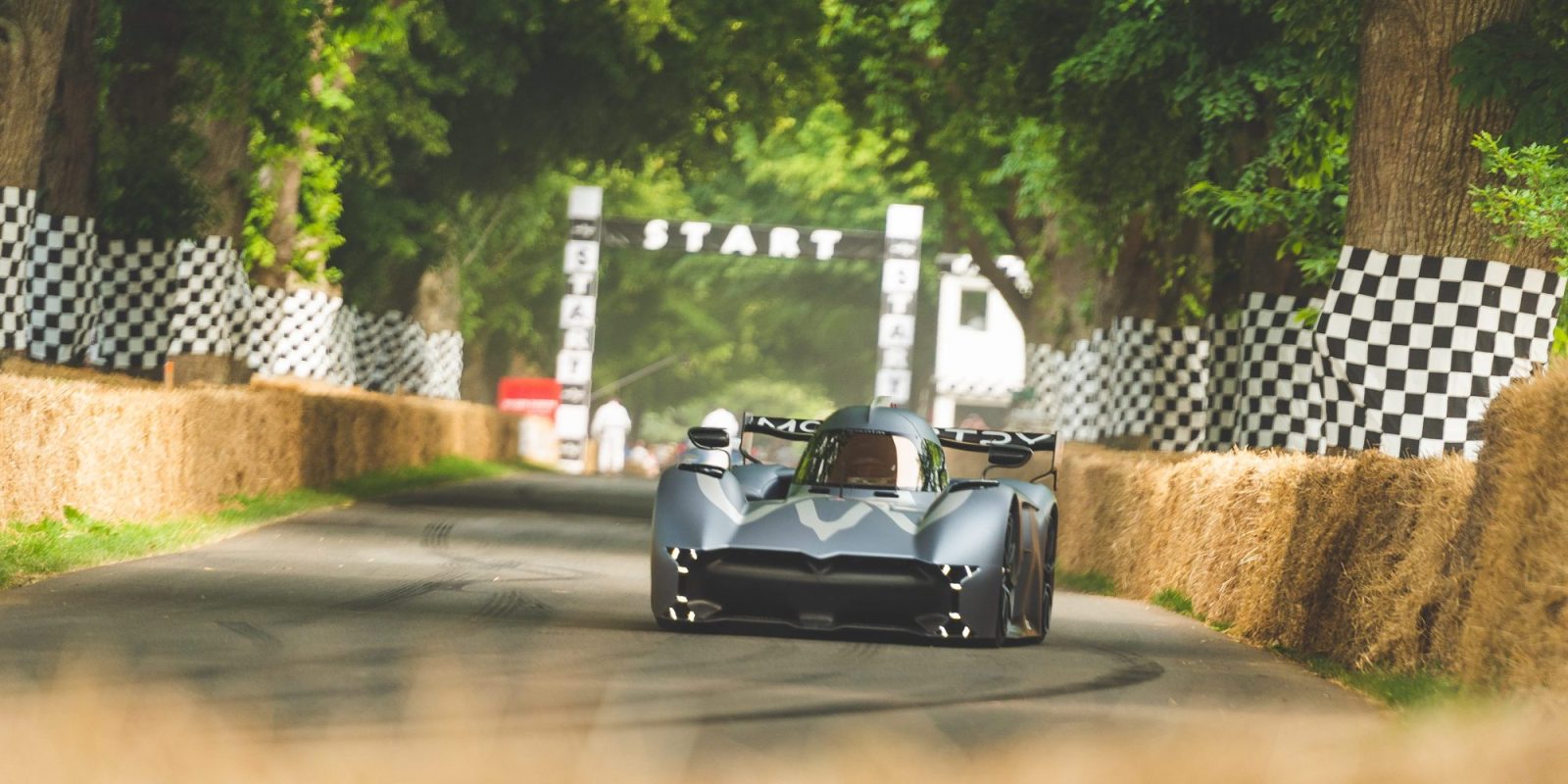
A fully electric car has beaten every car ever at the Goodwood Hillclimb track at the Festival of Speed, an annual gathering and demonstration of racing vehicles in England. The McMurtry Speirling fan car driven by Indycar and ex-F1 driver Max Chilton set a record of 39.08 seconds on the 1.86km (1.16 mile) course, almost a second better than the previous record.
The previous record was 39.9 seconds set by Romain Dumas in 2019 driving VW’s ID.R electric racecar, which in turn had beat a record held for 20 years by F1 driver Nick Heidfeld driving a V10 McLaren F1 car from the 1998 season.
The full video shows an almost cartoonish amount of speed and cornering ability from the plucky new vehicle, looking more like a slot car than an actual vehicle on a real track.
In the first few seconds the car launches as if from a slingshot (hitting 60mph in 1.5 seconds) and seems not to be bothered by any of the corners on the short uphill course. Have a look (it won’t take long):
You may ask yourself: why is it so loud? Aren’t EVs supposed to be quiet? And what’s that “exhaust” coming out the back?
Well, McMurtry’s new recordholder uses a fully electric powertrain just like VW’s entry did, but adds an additional technology that motorsport hasn’t seen for quite a while: it’s a “fan car.”
Fan cars work by having low side skirts and a fan underneath the car which draws air up and pushes it out of the rear of the car, creating a vacuum underneath the car. This results in incredibly efficient downforce, without the downsides of drag that a large spoiler or other aerodynamic surface often creates. As a result, fan cars can go faster with less aerodynamic drag, and can take corners at higher speeds, than other vehicles that rely on traditional aerodynamic surfaces.
Fan cars first appeared in motorsport in the 1970s with the Chaparral 2J, a boxy monstrosity (which also ran at Goodwood) which competed in 1970 but was outlawed due to its obscene aerodynamic advantages. Later, Brabham brought a fan car to F1 in 1978 and won its first race by a huge margin, but the concept was also immediately banned from competition there.
The McMurtry Speirling produces more than 2,000kg of downforce (on a 1,000kg vehicle), and unlike traditional aerodynamic surfaces, this doesn’t scale with speed – it’s available at any speed due to the fan’s operation. This means the McMurtry has more downforce at 0mph than an F1 car produces even at 150mph.
This is not the only record held by an EV at Goodwood. The McMurtry Speirling is the fastest car of any type to conquer the hillclimb, but there was already one EV that beat every other car up the hill. That record was set by a stock Nissan Leaf in 2012, which did the fastest Goodwood run ever….in reverse gear. Because EV motors run just as well in reverse as forward gear, all Nissan had to do was remove the software speed limiter on the reverse gear and managed to run a 55mph average speed on their run up the course. It was a goofy record but did display one benefit of EVs – not needing a complicated gearbox for most road applications.
While this is McMurtry’s first record, it may not be their last. VW took their ID.R on to set several records, including the EV record at Nürburgring and the overall record at the famously brutal Pike’s Peak hillclimb, and McMurtry may try to hunt some of those heads in the coming months and years. The Pike’s Peak hillclimb is being held this weekend on the other side of the globe from England, so McMurtry couldn’t be in two places at once, but we wonder if they might give it a try next year.
FTC: We use income earning auto affiliate links. More.





Comments